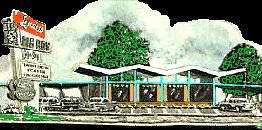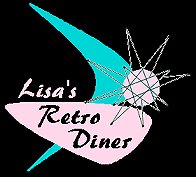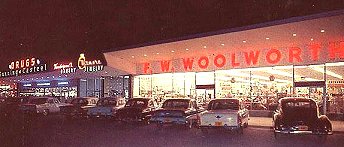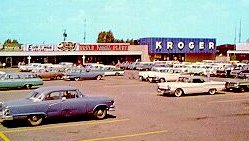|
more 1950s topics Nostalgia Cafe main page Nostalgia Cafe site map |
Around Town In The 1950s====================================================================== ====================================================================== ====================================================================== | ||
| this section is divided into 4 parts: | ----- | ----- | ||
 Shopping & More Shopping trends and Googie architecture |  Travel & Nightlife Vacation spots, motels, car trips, nightclubs and cocktail lounges | |||
 Dining Out Drive-ins, lunch counters, soda fountains, malt shops....yummy! |  Town & Country Views of city, small town and rural life | |||
===========================================================================
===========================================================================
===========================================================================
===========================================================================
|
The shopping experience was in a state of transition in the 1950s. If you lived in the city, you could take the bus or streetcar downtown for a day of shopping. But what if you lived in one of those new housing developments out in the country? To accomodate the growing suburban population, developers began to build strip shopping centers and huge discount stores in the outlying areas, signaling the beginning of the end for downtown shopping. | ----- |
Shopping
| |||||||||||||||||||||||||||
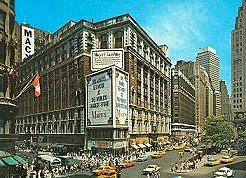 Macy's in New York City 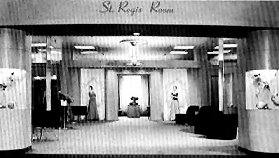 The St. Regis Room in Simpson's Department Store
| 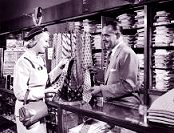 Department stores had several floors of merchandise. The floorwalker directed you to the appropriate department, where the clerk behind the counter helped you with your purchase and wrapped it up.  department stores
department stores
Macy's History Federated Department Stores In The 50s Macy's Herald Square Department Store Design In The 50s
| 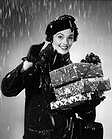  Before the 1950s, many stores issued their own charge cards, but there wasn't a credit card that could be used at many different locations. In 1950 a forgotten wallet led to the creation of Diner's Club, the first credit card. In 1958 both American Express and Bank Americard were introduced, and credit cards soon became a way of life.
| 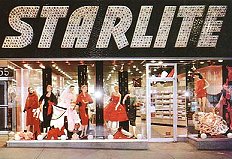 apparel Most people bought their clothing at small specialty shops. For the ladies, there were dress shops, hat shops and jewelry stores. The well-dressed man did his shopping at the haberdashery. Robert Hall Three Sisters Tiffany's Florsheim Shoes Lane Bryant Bond Clothier Jolie Gabor Jewelry Lerner History Of Florsheim Shoes Western Auto Blain's Farm & Fleet other stores In the 1950s the home and auto store became popular. In addition to tires and auto accessories, these stores also sold appliances, toys, bicycles, electronics and garden supplies. Western Auto and Farm & Fleet were two examples. Toys R' Us (1957) Western Auto J.C. Penney Blain's Farm & Fleet (1955) Montgomery Wards Sears 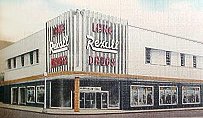 drugstores five-and-dimes The drugstore sold magazines, perfume and penny candy. You could also get your prescriptions filled at the pharmacy or drop off your film for developing. When it came to clothing, cosmetics, gifts and housewares, if the local five-and-dime didn't have it, you probably didn't need it. The soda fountain or lunch counter was a great place to stop for a snack or quick meal. Rexall Schwab's Walgreens Woolworth's Ben Franklin Kresge's Ben Franklin Nostalgia 1951-1969 Walgreens History 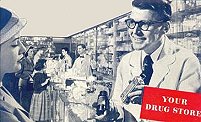 Get your prescriptions filled!
"mom and pop" businesses | candy stores bakeries appliance stores butcher shops small grocery stores
supermarkets Piggly Wiggly A&P Kroger Jewel National Piggly Wiggly History About A&P Supermarkets Supermarket History & Architecture
|
| 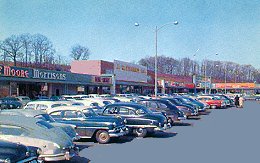 Times were changing, and downtown retailers realized that they needed to open stores in the new suburban shopping centers in order to stay successful. Giving up personal service in favor of lower prices was a trade many shoppers were willing to make, and this trend gave birth to the discount store. History Of Valley Fair Center Meadowdale To The Mall, Bearing Money A Shopping Giant Arrives History Of The Shopping Center & Mall  Catchy name, huh?
continue to: return to the 1950s main page
| |||||||||||||||||||||||
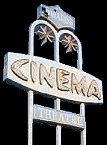 Googie
Googie
